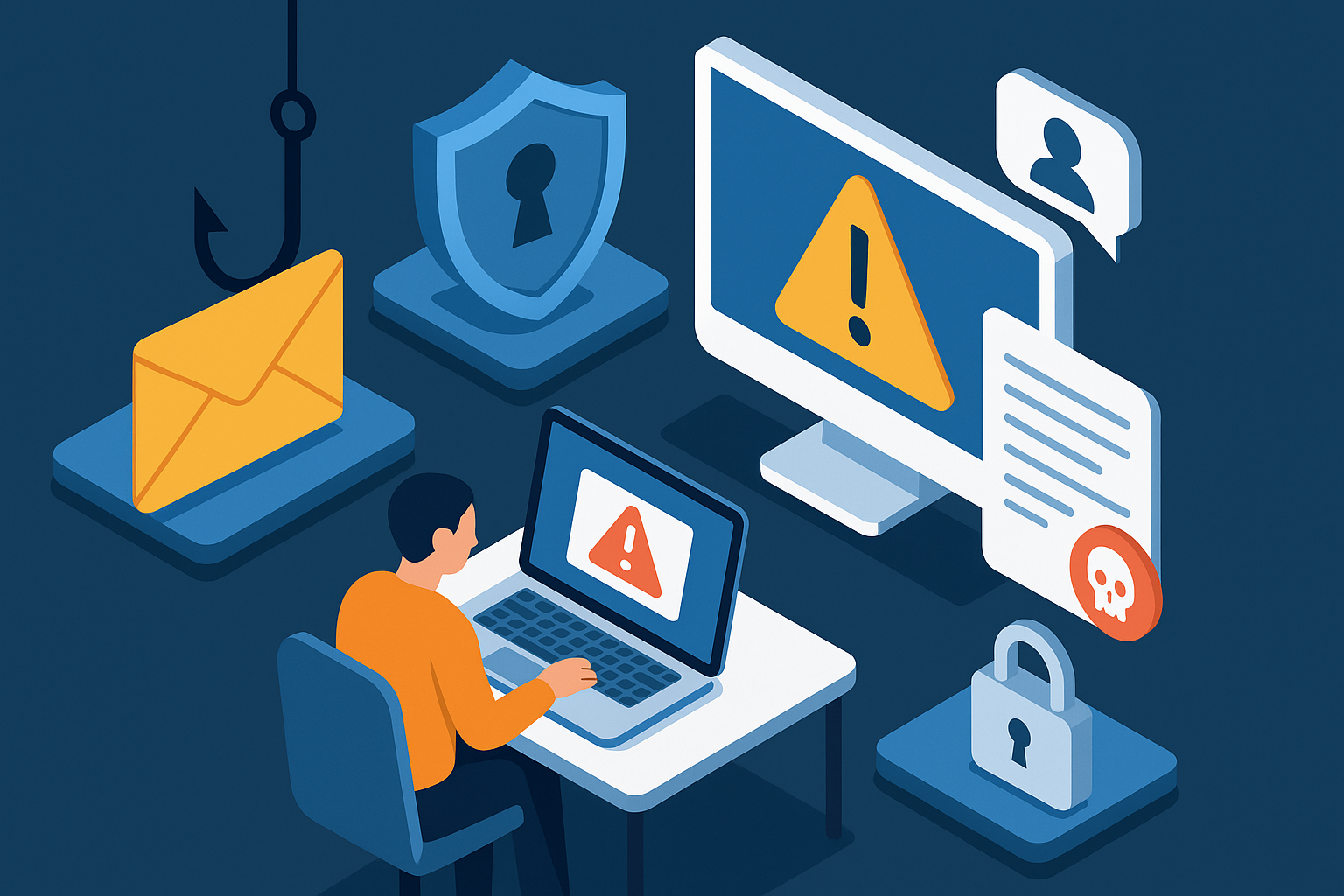Phishing attacks are now one of the most common, and expensive, cyber threats facing businesses of all sizes. Whether it’s a fake invoice, a fraudulent bank alert, or a message impersonating a coworker, these scams are crafted to deceive employees and steal sensitive information.
At Carden IT Services, we believe that prevention starts with education. In this post, we’ll break down how phishing attacks work, what signs to look for, and what steps you can take to protect your organization from falling victim.
What Exactly Is a Phishing Attack?
Phishing is a tactic where cybercriminals impersonate trusted contacts or organizations to trick people into giving up credentials, payment information, or access to systems. These attacks usually arrive via email but can also happen through text messages, voice calls, or fake websites.
The goal? Steal data, install malware, or gain unauthorized access to business tools and cloud environments.
Why Phishing Is a Growing Problem
Today’s phishing attacks are smarter and more widespread than ever. With more employees working remotely and using cloud-based systems, hackers have more opportunities to target businesses, and AI tools are making phishing easier to scale.
- Over 90% of cyber breaches start with a phishing email
- Small and mid-sized businesses are frequent targets due to fewer security layers
- Even tech-savvy employees can fall for convincing or urgent messages
Common Types of Phishing You Should Know
Knowing the different forms phishing can take helps you stay prepared. Here are three major types:
Email Phishing
The classic method, criminals send fake emails that appear to come from trusted sources like Microsoft, Amazon, or banks. Often the domain name is slightly altered, like “m1crosoft.com” instead of “microsoft.com”.
Spear Phishing
More targeted and harder to detect, spear phishing uses personalized information like names, job titles, or real customer data to trick specific individuals inside your company.
Vishing (Voice Phishing)
Voice phishing scams involve phone calls, often using AI-generated voices that sound like a colleague or vendor. The caller might request urgent financial transfers or sensitive data.
How to Spot a Phishing Email or Message
While some phishing attempts are obvious, others are highly sophisticated. Watch for these warning signs:
- Strange or misspelled email addresses
- Unexpected attachments or suspicious links
- Spelling and grammar mistakes
- Urgent tone (“Your account is at risk!”)
- Requests for login credentials or payment information
- Lack of branding, footers, or company disclaimers
What Happens If a Phishing Attack Succeeds?
One wrong click can cause serious damage:
- Stolen credentials: Giving attackers access to systems or customer data
- Financial loss: Via fraudulent transactions or ransomware demands
- Regulatory violations: Exposing sensitive data may breach GDPR, HIPAA, etc.
- Reputation damage: Lost trust, media coverage, and client churn
Recovery from a successful phishing attack can take weeks, or months, and the consequences may linger far longer.
How to Protect Your Business from Phishing
The best defense against phishing is a layered strategy involving technology, training, and process. Here’s what that looks like:
1. Employee Cybersecurity Awareness Training
Regular cybersecurity training helps employees recognize threats and avoid falling for scams.
2. Email Security and Email Filtering
Advanced filters can block known phishing sources and scan links or attachments before they hit the inbox.
3. Multi-Factor Authentication (MFA)
Even if credentials are compromised, MFA can prevent unauthorized logins by requiring a second verification step.
4. Software Updates
Outdated systems are more vulnerable to malware and exploits. Keep your OS, browsers, and security tools current.
5. Simulated Phishing Tests
Test your team with fake phishing emails to reinforce best practices and identify gaps in training.
6. Simple Internal Reporting
Make it easy for employees to report suspicious messages. The faster your IT team knows, the faster they can respond.
How Carden IT Services Can Help
We don’t just help businesses recover from phishing, we help them prevent it in the first place. Here’s what we offer:
- Phishing Simulations & Awareness Training: Practical education that helps employees spot and report threats.
- Advanced Email Protection: Filtering tools that block malicious content before it reaches users.
- Cybersecurity Audits: We assess your current setup and recommend improvements tailored to your risk level.
- 24/7 Threat Monitoring: Our team is on standby to detect, respond to, and contain security incidents quickly.
Whether you’re a startup or a growing enterprise, our team can build a custom solution that fits your needs and budget.
Final Thoughts
Phishing scams aren’t going anywhere, but you don’t have to face them unprepared. With the right tools, policies, and training, you can reduce risk and stay a step ahead of cybercriminals.
Book a free security consultation with Carden IT Services to explore our phishing protection tools, email security services, and team training programs. We’ll help you build a stronger, safer workplace, one email at a time.

